Nestled in the lap of the Himalayas, Bhutan, the Land of the Thunder Dragon, is a mystical kingdom where time seems to stand still. Governed by the philosophy of Gross National Happiness, Bhutan balances its cultural heritage with modernity. Buddhism, which entered Bhutan in the 8th century through the revered Guru Rinpoche, also known as Padmasambhava, deeply entwined the kingdom’s history. Known as the second Buddha, he played a pivotal role in establishing Buddhism in Bhutan and the wider Himalayan region. His teachings and spiritual presence continue to shape the Bhutanese way of life, with many monasteries and temples dedicated to him.
Complementing the teachings of Padmasambhava is the influence of Bhutan’s most unconventional and beloved saint, Lama Drukpa Kunley, popularly known as the “Mad Wandering Monk” or the “Divine Madman.” Renowned for his unorthodox methods of preaching, Drukpa Kunley defied traditional norms by indulging in hunting, drinking, and womanizing, yet his teachings carried profound spiritual significance. His humor, directness, and irreverence made him a beloved figure, spreading enlightenment in ways that resonated deeply with ordinary people. His legacy is vividly alive in Bhutan, particularly in the Chimi Lhakhang, the Fertility Temple.
Bhutan, officially the Kingdom of Bhutan, is a landlocked country in South Asia situated in the Eastern Himalayas between China in the north and India in the south, with the Indian state of Sikkim separating it from neighboring Nepal. With a population of over 727,145 and a territory of 38,394 square kilometers (14,824 sq mi), Bhutan ranks 133rd in land area and 160th in population. Bhutan is a constitutional monarchy with a Druk Gyalpo (king) as the head of state and a prime minister as the head of government. The Je Khenpo is the head of the state religion, Vajrayana Buddhism.
Geography
Bhutan’s dramatic landscapes range from the subtropical plains of the south to the towering snow-capped peaks in the north. This small landlocked country bordering India and China boasts pristine rivers, lush forests, and terraced fields. Bhutan, home to rare species like the snow leopard and the takin, its national animal, is a haven for biodiversity and conservation, with forests covering over 70% of its area.
The Flag of Bhutan
The Bhutanese flag is a vibrant symbol of the nation’s spirit. Divided diagonally, the yellow section represents the secular authority of the King, who serves as the head of state and the guardian of the country’s sovereignty. The red section signifies Buddhism’s spiritual leadership, acknowledging Je Khenpo, the country’s highest Buddhist leader, as an equal partner in governance. This partnership underscores Bhutan’s commitment to moral governance, where political acumen and spiritual wisdom guide decisions. The central white dragon, or Druk, symbolizes purity and the nation’s strength, while its claws clutching jewels represent the country’s wealth and security. These elements encapsulate the Bhutanese balance, respect, and collective well-being philosophy.
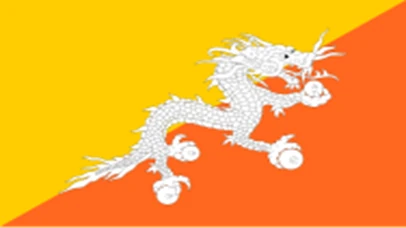
Governance and the Bhutanese Way of Life
Bhutan’s governance uniquely blends monarchy, democracy, and spirituality. The King, or Druk Gyalpo, rules as the constitutional head of state, while the Je Khenpo, the Chief Abbot of Bhutan, serves as the spiritual head, fostering the country’s deep-rooted Buddhist traditions. This partnership ensures a harmonious balance between spiritual and temporal power, an intriguing and impressive system. Bhutan’s citizens hold their leaders in high regard, trusting them to safeguard the country’s heritage and ensure its sustainable progress.
A notable presence in Bhutan is IMTRAT (Indian Military Training Team), which plays a vital role in maintaining Bhutan’s security and enhancing its defense capabilities. This reflects the close ties between Bhutan and India. The government provides free education and healthcare to its citizens and visitors, emphasizing its hospitality and commitment to collective welfare.
The National Dress of Bhutan: Gho and Kira
The Gho for men and the Kira for women are Bhutan’s traditional and national dresses, reflecting the country’s rich cultural heritage and distinct identity. Introduced in the 17th century by Zhabdrung Ngawang Namgyel, the unifier of Bhutan, these garments symbolize Bhutanese unity, pride, and adherence to traditional values.
The Gho. The Gho, a knee-length robe tied at the waist with a kera belt, is a testament to Bhutanese ingenuity and adaptability. Worn with knee-high socks and traditional leather shoes, the gho provides functionality and comfort, suiting Bhutan’s varied climates. It includes large, deep pockets, which are surprisingly practical for carrying small items, including religious scriptures and even smartphones in modern times.
The Kira. The kira, a long, rectangular piece of cloth women drape around their bodies, symbolizes elegance and grace in Bhutanese fashion and culture. Koma (silver or gold brooches) pin it at the shoulders, and a belt secures it. A blouse (wonder) and a jacket (too) complement the outfit, forming a graceful and elegant ensemble. Kira patterns and colors vary, often showcasing intricate handwoven designs passed down through generations.
Cultural and Symbolic Importance
The national dress is not just a garment; it represents Bhutan’s identity, traditions, and spiritual beliefs. Wearing the Gho and Kira is mandatory in formal settings, schools, government offices, and during festivals and religious ceremonies. This policy reflects the government’s efforts to preserve Bhutan’s cultural heritage in a rapidly globalizing world.
The distinct designs and colors of the fabrics often tell a story, representing the wearer’s region or social status. Donning these traditional outfits fosters a sense of unity, respect, and pride among Bhutanese citizens, reminding them of their shared values and cultural roots. For visitors, witnessing Bhutanese people wearing their national dress daily adds an authentic and immersive touch to the travel experience, showcasing Bhutan’s commitment to its cultural legacy.
Bhutanese culture places significance on Tag, Singhe, Chung, and Druk
The reverence for the natural world, mythology, and symbolism deeply roots Bhutan’s rich cultural and spiritual heritage. Four animals—Tag (Tiger), Singhe (Lion), Chung (Garuda), and Druk (Thunder Dragon)—hold profound significance in Bhutanese life and represent the country’s spiritual beliefs and values.
- The tag (Tiger) symbolizes strength, determination, and protection and is associated with Guru Rinpoche’s journey to Paro Taktsang.
- Singhe (Snow Lion) represents fearlessness, purity, and the spread of Buddhist teachings.
- Chung (Garuda) signifies wisdom, vision, and triumph over ignorance.
- The most iconic Druk (Thunder Dragon) symbolizes power, sovereignty, and the divine voice of the gods, resonating with Bhutan’s identity as “Druk Yul,” the Land of the Thunder Dragon.
These animals, known as the Four Dignities, serve as spiritual protectors and inspire the Bhutanese to uphold moral values, seek spiritual growth, and maintain balance with nature.
The Five-Coloured Prayer Flags and Their Significance
Prayer flags are vital to Bhutanese culture and spirituality, symbolizing the connection between humans, nature, and the divine. The five colors—white, red, green, yellow, and blue—each represent an element of nature, reflecting the Bhutanese philosophy of balance and harmony:
- White. Air symbolizes purity and spiritual clarity.
- Red. Fire represents energy, courage, and transformation.
- Green. Water signifies compassion, adaptability, and nourishment.
- Yellow. Earth symbolizes stability, prosperity, and growth.
- Blue. The sky represents boundless space and spiritual awareness.
The fluttering of these flags in the wind is believed to carry prayers and blessings to all beings, fostering harmony and dispelling negative energies.
Trip Planner
Bhutan offers diverse experiences throughout the year. The best time to visit is during spring (March-May) and autumn (September-November), when the weather is pleasant and the landscapes are most vibrant.
Although it’s cold from January to March, you can still enjoy your visit because there aren’t many tourists around, allowing you to enjoy the environment without the bustle of a busy city.
I recommend planning two days in Thimphu and two nights in Paro to explore the breathtaking mountain passes. Indian tourists can fly into Bagdogra or take a train to New Jalpaiguri or Hashimara.
The road journey from Bagdogra to Jaigaon is approximately 4 hours. The migration to Bhutan is quick. It is mandatory to hire a guide who assists in the migration process. A passport/voter’s card is acceptable at immigration. At immigration, you must pay a sustainable development fee (SDF) of Rs 1200/- per person per day of stay. Tourists are cautioned to carry crisp Indian currency notes as the immigration officers do not accept soiled currency notes. All tourists, besides Indians, must pay USD 100/200 per person daily to stay in Bhutan. A tourist guide is mandatory; the daily rates are Rs 2500/-.
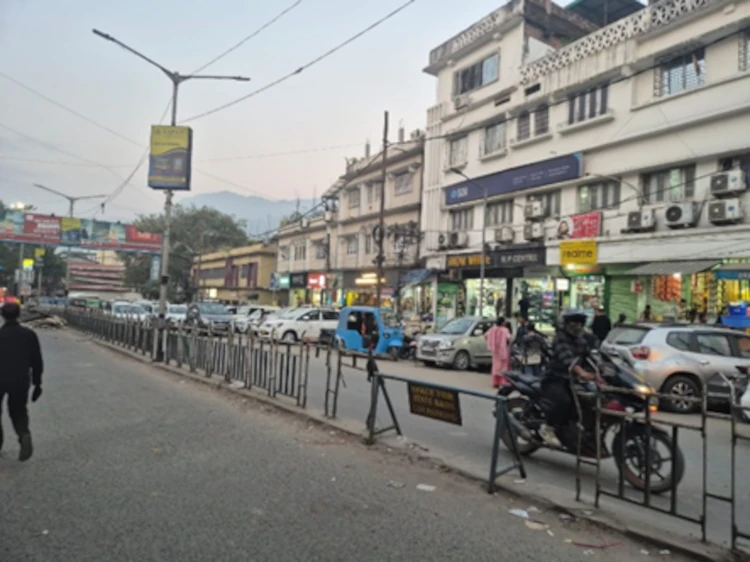
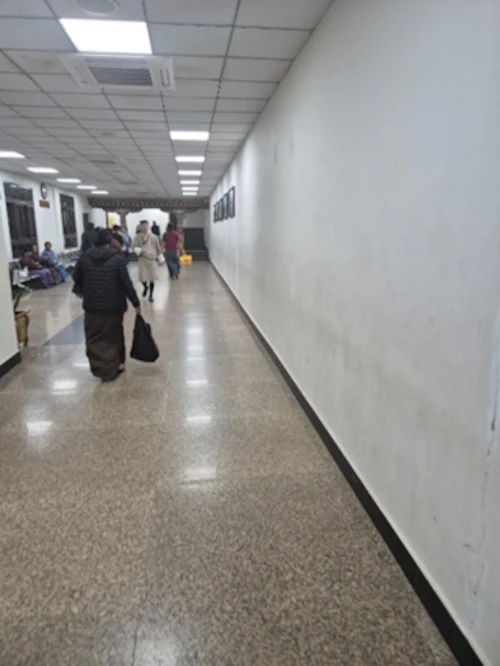
The drive from Phuntsoling to Thimphu is six hours. The journey from Thimphu to Punakha takes three hours, while the journey from Thimphu to Paro takes approximately two hours. The pass is three hours one way from Paro to Chele La.
Indian currency is widely accepted, and Re 1 equals Nu 1 of Bhutan. The local Bhutanese can easily converse in Hindi and English.
Most travelers fly into Paro, the country’s only international airport, to enter Bhutan. You must arrange your trip through a registered tour operator due to restrictions on independent travel.
Places of interest
Thimphu’s key highlights include.
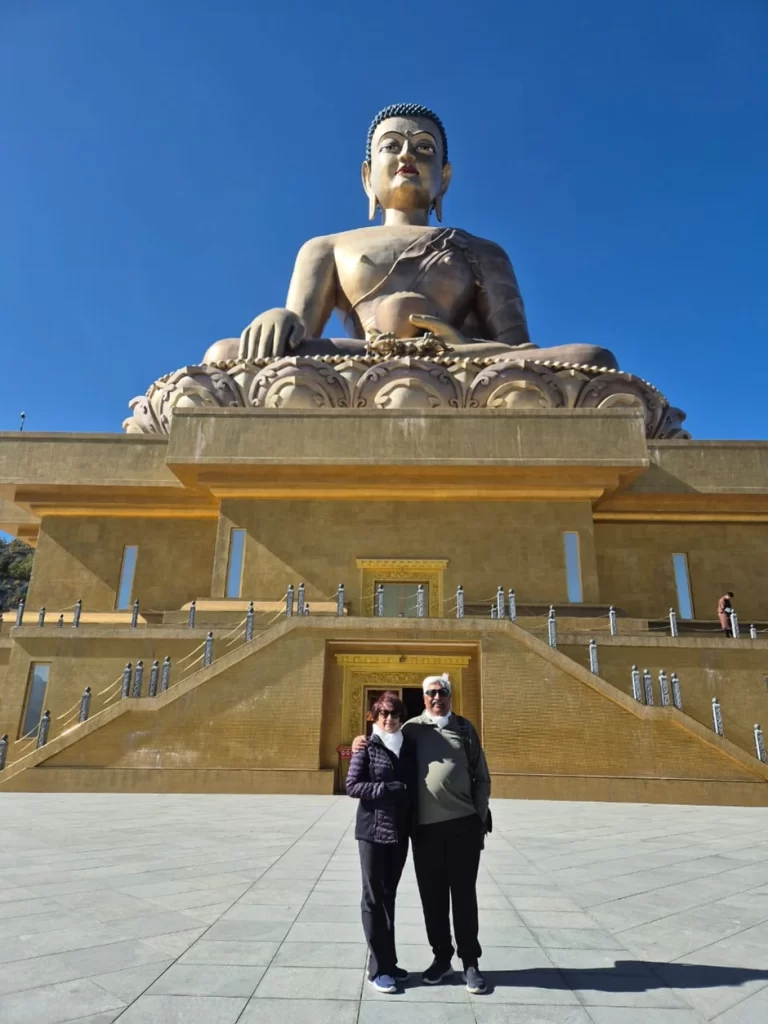
- Buddha Dordenma Statue. The 51-foot-tall golden Buddha gazes over the Thimphu Valley.
- Simply Bhutan Museum. A live museum showcasing Bhutanese rural life and traditions.
- Zoo with Takin. Home to Bhutan’s national animal, created by Lama Drukpa Kunley.
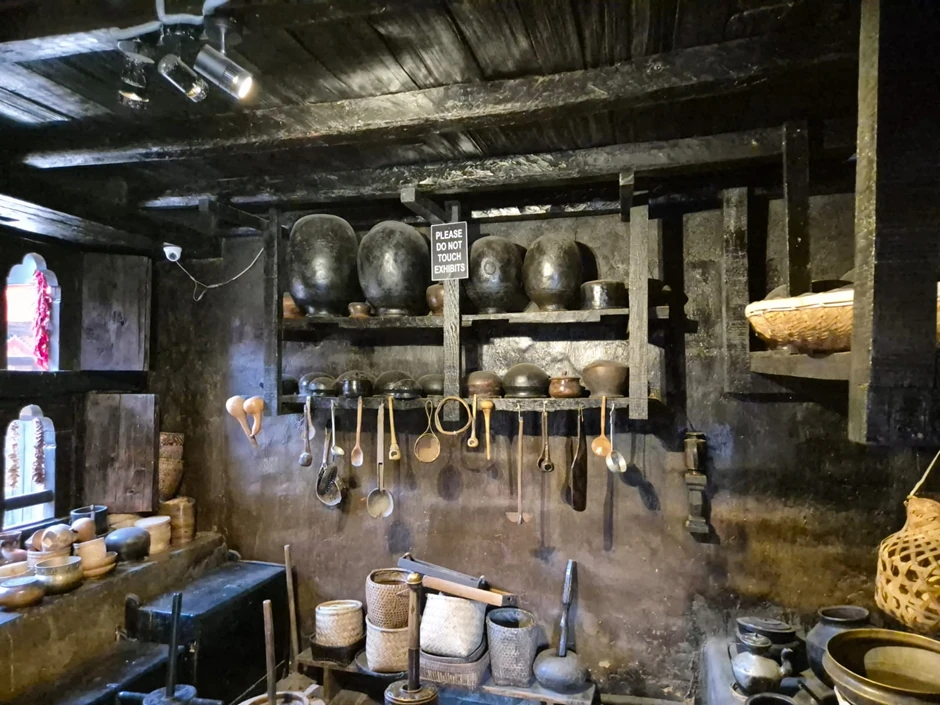
Punakha’s key highlights include.
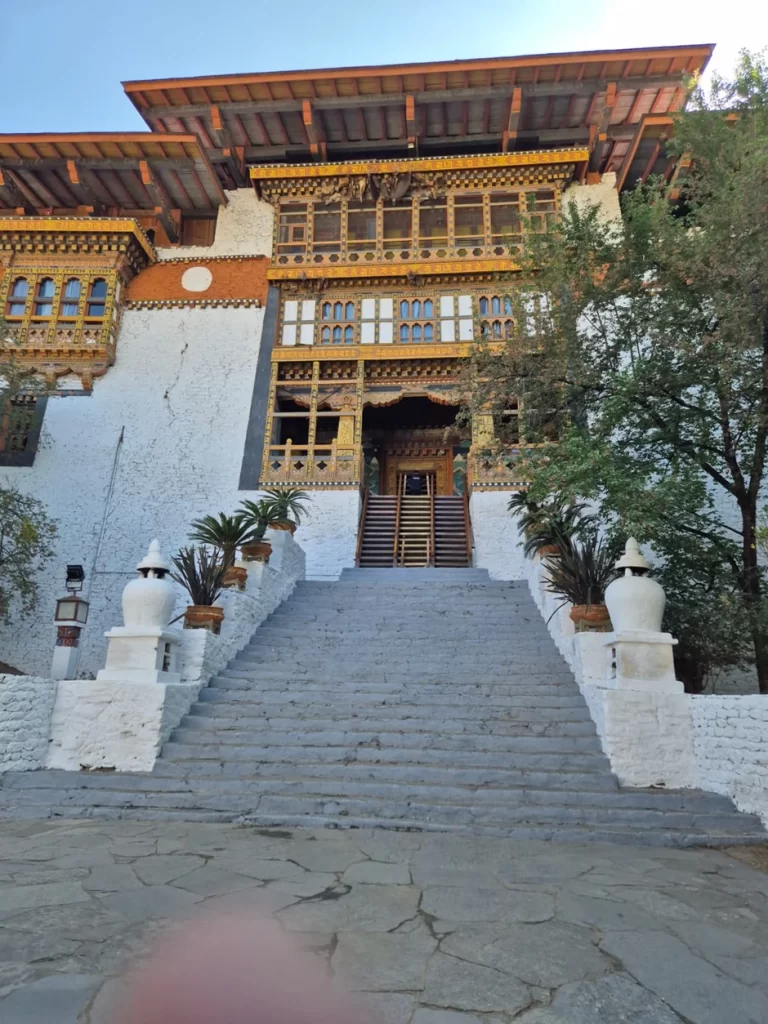
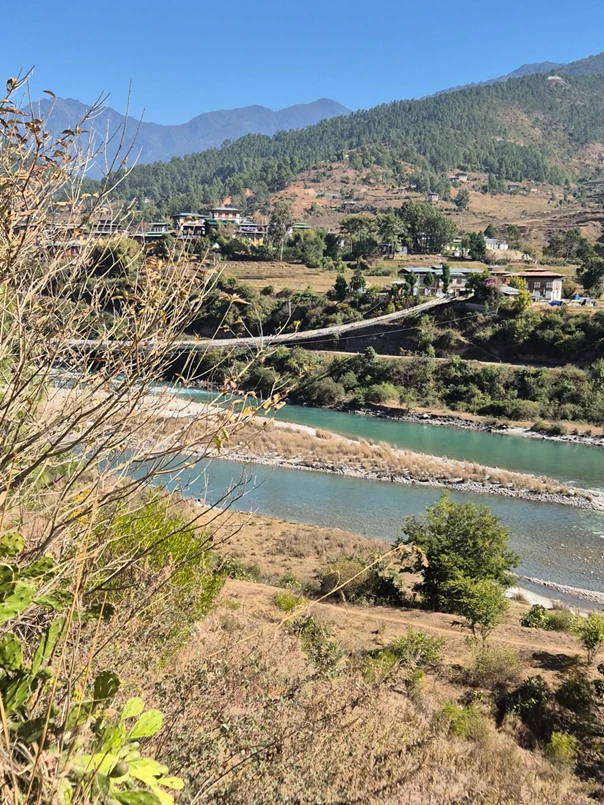
- Punakha Dzong: A stunning fortress at the confluence of two rivers.
- Chimi Lhakhang (Fertility Temple): Dedicated to the Divine Madman, surrounded by phallic symbols to ward off evil spirits.
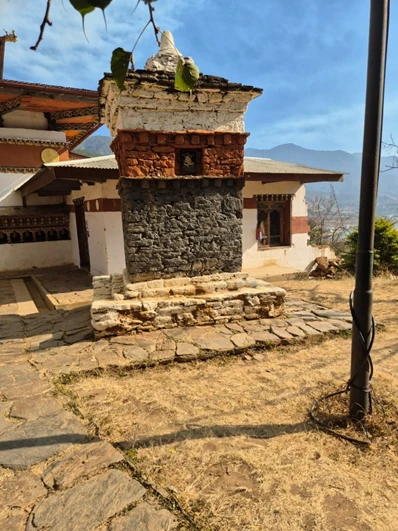
The Fertility Temple. Lama Drukpa Kunley, popularly known as the “Mad Wandering Monk” or the “Divine Madman,” slays two demons buried under the visible structure.
Phobjikha Valley and Bumthang. Phobjikha Valley is home to black-necked cranes and Gangtey Monastery. Bhutan’s spiritual heartland, Bumthang, is rich in ancient temples and vibrant festivals.
Dochula and Chele La Passes
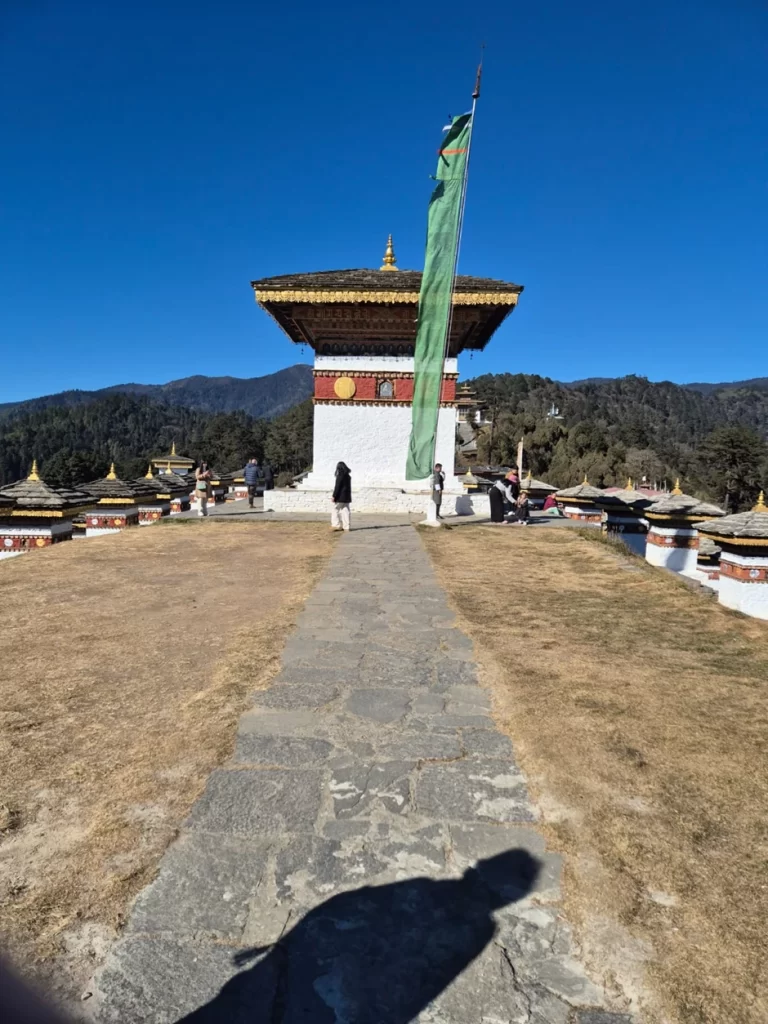
The Dochu La is a mountain pass in the snow-covered Himalayas within Bhutan on the road from Thimphu to Punakha. Here, the eldest Queen Mother, Ashi Dorji Wangmo Wangchuk, built 108 memorial chortens, or stupas, known as “Druk Wangyal Chortens.”
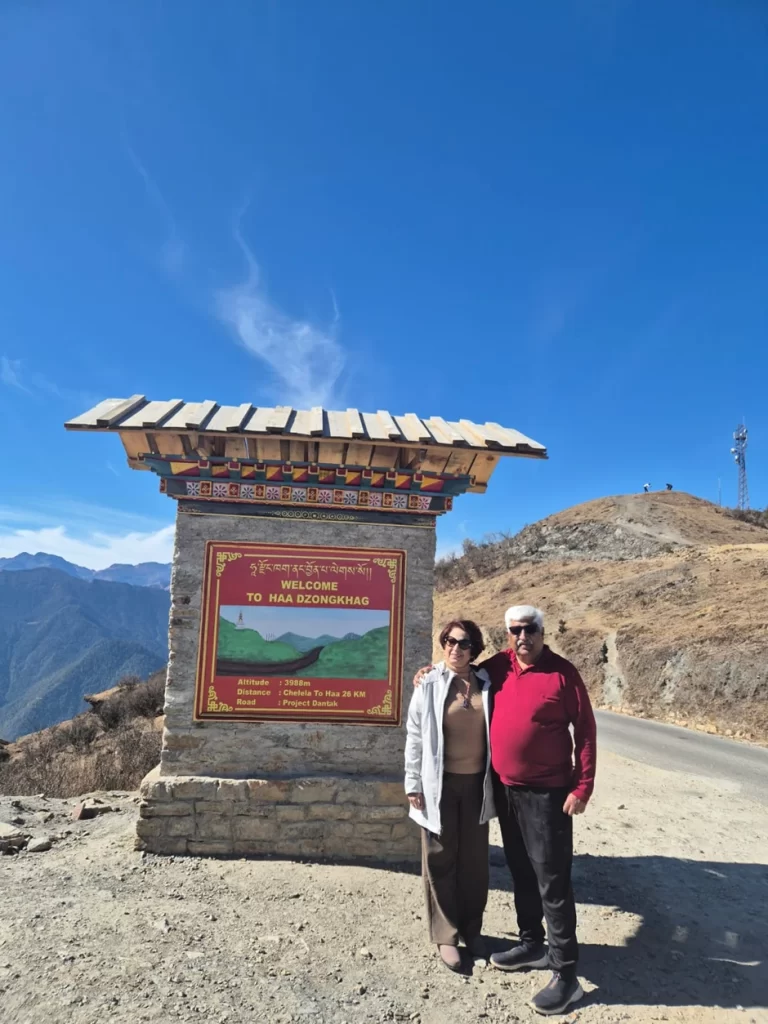
Chelel La Pass is astride the valley, with the Haa Valley in the background and the Paro Valley in the front.
These mountain passes offer breathtaking views of the Himalayas, rhododendron forests, and snow-capped peaks.
Paro. Paro Taktsang (Tiger’s Nest Monastery) is a must-visit site. Perched on a cliffside, it symbolizes Bhutan’s spiritual essence.
Foods and drinks. Bhutanese cuisine emphasizes chilies.
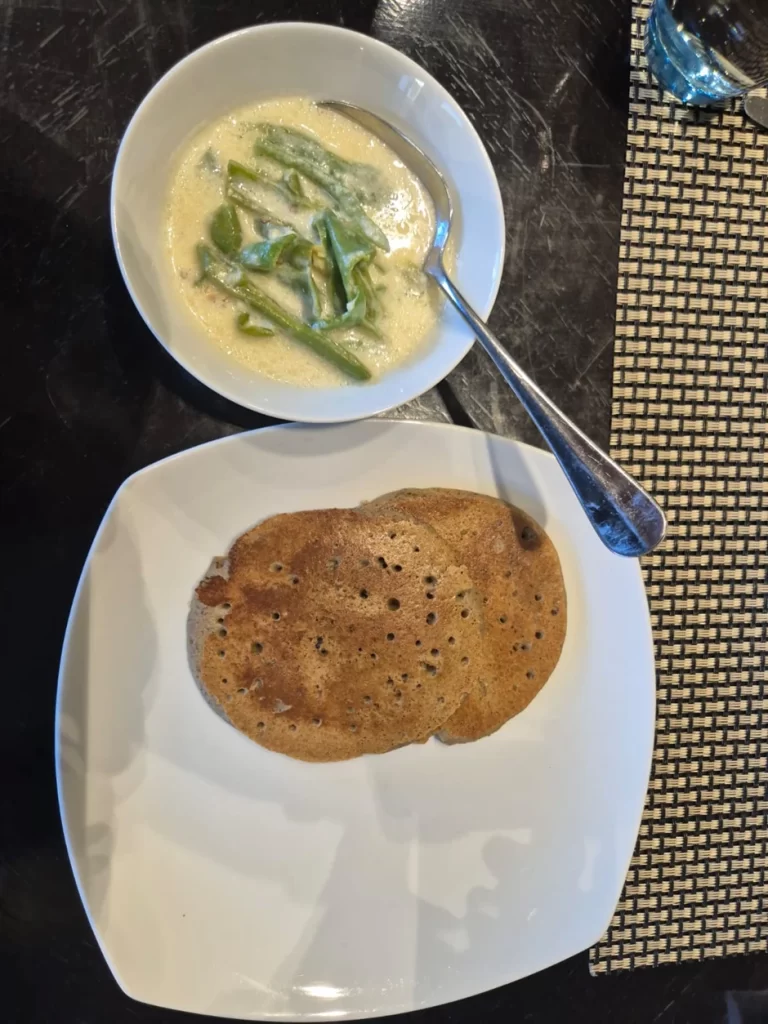
- Ema Datshi. A fiery stew of chilies and cheese.
- Phaksha Paa. Pork with radish and red chilies.
- Pair your meal with Suja (butter tea) or Ara (traditional rice-based alcohol).
Conclusion
Bhutan is a harmonious blend of natural beauty, spiritual richness, and cultural depth. Its vibrant traditions, profound spirituality, and serene landscapes make it a truly unique destination.
Tashi Delek!
May your journey through Druk Land be as enriching and serene as the land.
